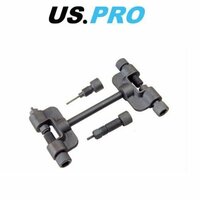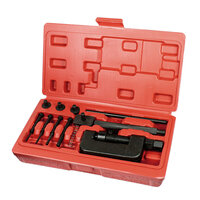ScottishBadger
CB750 Member
Hi folks. Just bought a 1985 ('82 model, not registered until '85) CB750F. Rode home ok, but with a bit of "tinkling" from the cam chains. Both tensioners at max adjustment, A-chain still not tensioned and stretched to the point that it can be lifted on the sprocket!
I've ordered new chains (tensioners seem fine, no damage visible and flexing nicely) but I'm going for a rivet-link A-chain purely to avoid a full engine stripdown at this time. I know many frown upon this, but chains are riveted together anyway, so as long as the rivet is formed correctly, what's the issue? Has anyone done this themselves, that can offer any pearls of wisdom? I should add, I'm an aircraft engineer by trade, so I'm not shy of tools. Cheers.
I've ordered new chains (tensioners seem fine, no damage visible and flexing nicely) but I'm going for a rivet-link A-chain purely to avoid a full engine stripdown at this time. I know many frown upon this, but chains are riveted together anyway, so as long as the rivet is formed correctly, what's the issue? Has anyone done this themselves, that can offer any pearls of wisdom? I should add, I'm an aircraft engineer by trade, so I'm not shy of tools. Cheers.


